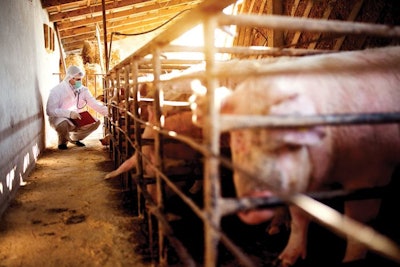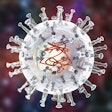
The Swine Health Information Center (SHIC) is reporting the successful completion of a multi-phase project including African swine fever (ASF) field projects in Vietnam.
The results of this work can inform prevention and preparedness efforts for U.S. pork producers and practitioners while also helping inform response and recovery efforts for the ASF epidemic in Vietnam.
In 2019, SHIC, with support from the National Pork Producers Council, received a grant from the U.S. Department of Agriculture’s (USDA) Foreign Agricultural Service division to fund this multi-phase project. Among the grant-related efforts completed were sharing disease knowledge and strengthening veterinary services capacity for mitigating ASF impact on Vietnam and China, as well as on-the-farm field projects. Also, following a request from the Vietnamese Department of Animal Health (DAH), as a result of the introduction of the ASF vaccines, efforts were focused on supporting the DAH in the design and evaluation of the vaccination program.
In response to a SHIC open, competitive call for proposals in March 2020, 10 field projects were ultimately planned, funded and completed.
1. Potential of rodents to be a vector in the transmission of African swine fever in two commercial farms in Vietnam with differing biosecurity levels
The two projects in this study did not provide evidence that rodents are significant factors in the transmission of ASF virus between animals or farms.
2. Using standard laboratory PCR testing, and comparing available POC technology, to assess the validity of current ASF test and remove practices in commercial swine farms within Vietnam.
Results showed tooth extraction did not eliminate ASF virus from sow farms and discovered ASF virus DNA was detected in blood from sows showing no clinical signs, as well as indicated POC tests had poor diagnostic performance.
3 and 4. ASF Research projects in Vietnam examining the use of serum and oral fluid ELISAs
This unprecedented study showed there is no single best diagnostic approach for ASF virus surveillance and demonstrates that the combined use of the Tetracore qPCR and indirect ELISA tests and serum/oral fluid sampling increase efficiency of ASF disease surveillance.
5. Determining the pathways for ASF Introduction into boar studs and risk of ASF transmission via semen movements during an ASF outbreak
The project used the experience with ASF in Vietnam to estimate the risk of ASF introduction into boar studs in the U.S. The results varied from “negligible” due to water, as long as no surface water enters the facility, to “low” from people, fomites and other entries as long as current biosecurity practices are strictly implemented.
6. Time and temperature required for complete inactivation of African swine fever virus
Heat treatment at 54C and 63C resulted in positive PCRs but negative viral isolation. However, after bioassay exposing pigs to ASF virus-contaminated feces held at 54C for 10 minutes, viral genomic DNA was detected in their blood at 5 days post-inoculation, indicating that ASF virus infectivity remained.
7. Evaluate the diagnostic performance of pen-side tests for ASF detection
The viral DNA PCR pen-side test had better performance than the viral antigen lateral flow test as it can detect infected pigs earlier and for a longer duration after infection.
8. Field evaluation of oral fluids as a convenient, aggregate sample for early detection of African swine fever
Based on the overall field data, ASF virus DNA can be detected in oral fluids within 0-3 days of the initial detection of viremia in the pen. If the viral load in the pen is low, it may take up to 3 days to detect in oral fluids. This is consistent with the results from a previous study on experimentally inoculated animals under experimental conditions and further validates oral fluids as a reliable aggregate sample for screening swine herds for early detection of ASF.
9. Identifying pathways of entry of ASF Virus onto farms to enhance information for improving biosecurity in Vietnam
The top 10 shared risks for the spread of ASF in Vietnam included entry of water, feed trucks, replacement breeding animals, semen, visitors, tools (for breeding replacements and cull animals), livestock trailers (for weaned pigs and replacement pigs) as well as pork and other food entering the premises.
10. Coordinated through the University of Minnesota’s ProgRESSVet program, building ASF response capacity in Vietnam included a series of ASF-related courses delivered in eBook format, including:
- African swine fever epidemiology and risk assessment
- Biosecurity and ASF virus risk management in pig farms
- Organization of control plans at the central level
- Introduction to spatial analysis
- Introduction to epidemiological modeling
- ASF vaccine evaluation and post-vaccination monitoring
Four online and in-person workshops with animal health officials of the Vietnam Department of Animal Health were conducted as well.

















